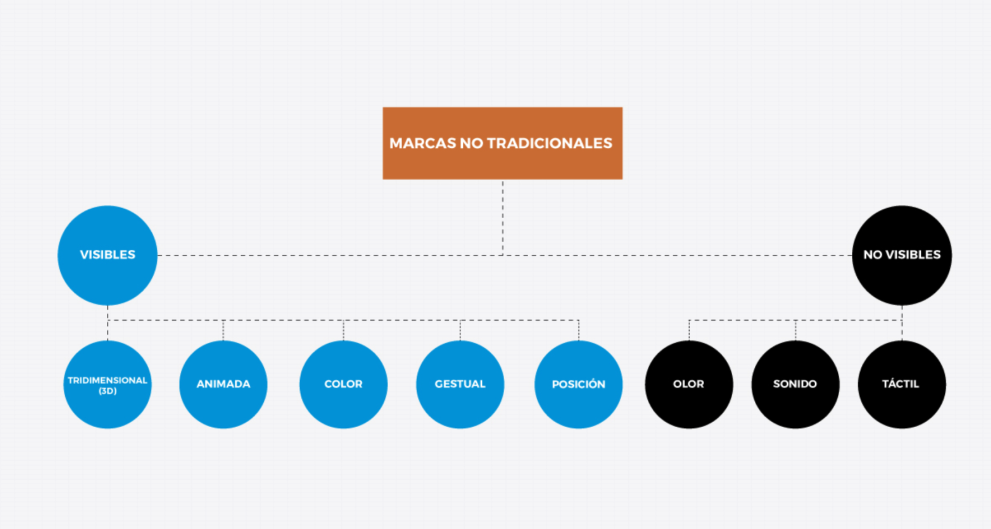
Lucía Tamayo Del Portillo, LLM Business Development Specialist at ClarkeModet Colombia
Non-traditional trade marks
A non-traditional trademark can be described as a type of distinctive sign that is not limited to the visual perception of it, and that does not fall within the old-style categories of trade marks such as nominative or figurative ones, think about words such as Chanel or a figure such as the golden arches from McDonald's.
Unconventional trade marks play with the consumer´s senses, making any sign capable of being represented graphically to be eligible for distinguishing products and services. Examples of non-traditional trade marks are three-dimensional shapes, such as the Coca-Cola bottle or the Toblerone chocolate bar, as well as sounds like the MgM lion roar, animated signs, holograms, smells, and even colour, like the red sole of Christian Louboutin shoes.
SIC Colombia’s evolution of non-traditional trade marks
At the SIC Colombia website, users can check a differentiation between visible and non-visible non-traditional trade marks in Colombia, with a comprehensive explanation on each one of them:
Visible trade marks
These are three-dimensional (3D), animated, color, gestural and position marks.
Non-visible trade marks
The non-visible marks correspond to smell, sound and tactile marks.
Would you like to read more (in Spanish) on the differences between the varied non-traditional trade marks in Colombia, please refer to SIC Colombia’s website.
Registration of non-traditional trade marks in Colombia
In Colombia, these types of innovative trade marks have been available for registration for a long period of time, as the Andean Decision 486 in 2000 allowed such type of distinctive signs. Nevertheless, with the growing number of applications and international registrations coming in via Madrid Protocol, the Colombian Trademark Office (SIC) issued in 2016 the guidelines which established the legal requirements to apply for non-traditional trade marks in the country. Basically, the guidelines requested sufficient graphic descriptions of the signs to allow third parties to fully understand the scope of protection of the brand.
Changes in the registration: claiming colours when applying
Considering the importance of these type of dynamic and innovative signs, the Colombian Trademark Office felt the need to update certain aspects pertaining registration requirements. Consequently, Resolution No. 59671 was issued in September 2020, and its most relevant change entered into force in April 2021.
From this date on, any trade mark applicant planning to enter this Latin American market must decide when applying, whether to claim one colour as part of the integrity of the sign from which they are seeking protection.
Registering the sign claiming colours can help the trade mark to be more distinctive among consumers and separate sufficiently from other similar trade marks from competitors, nevertheless, if the trade mark is not used identically this can contribute to a cancellation request by a third party.
If the sign may use different colour palettes it is recommended to register the trade mark without claiming colour to have more versatility.
Regardless of your choice, remember this newly implemented requirement in Colombia that will help you avoid further official actions by the trade mark examiners and will for sure save you and your business time and money.
Details
- Publication date
- 16 July 2021
